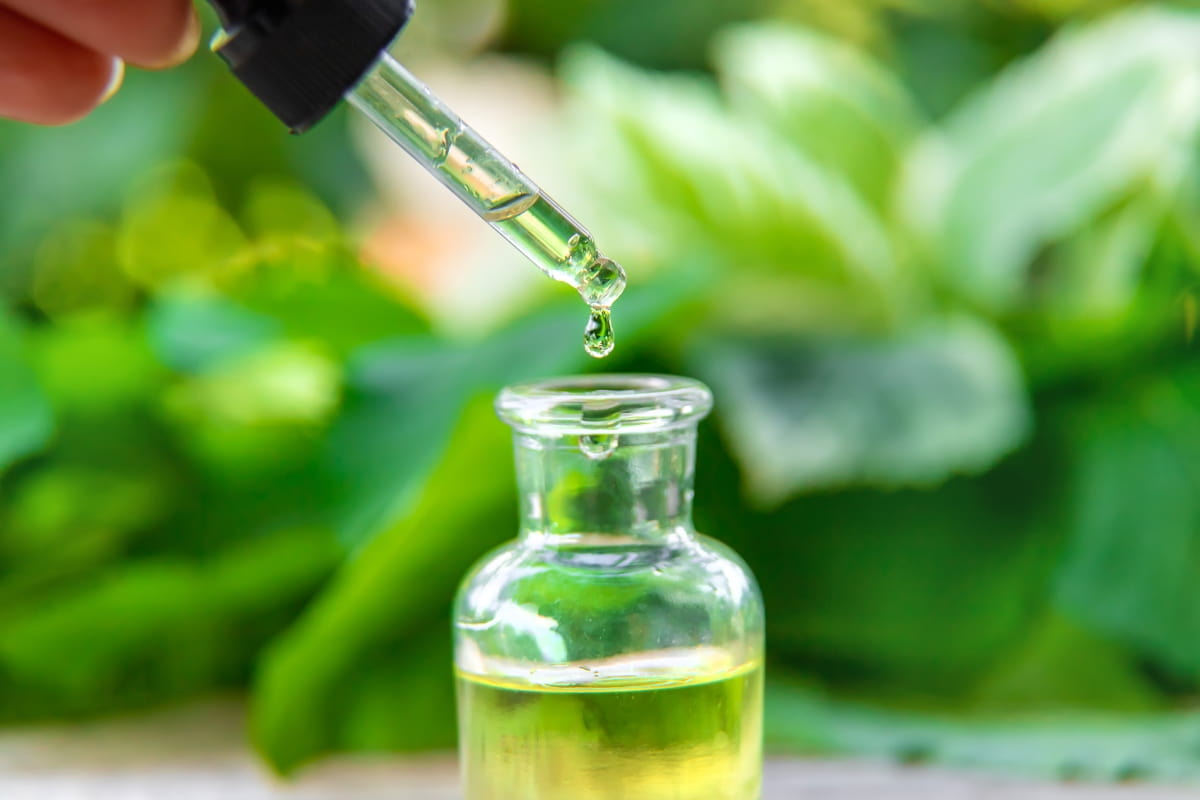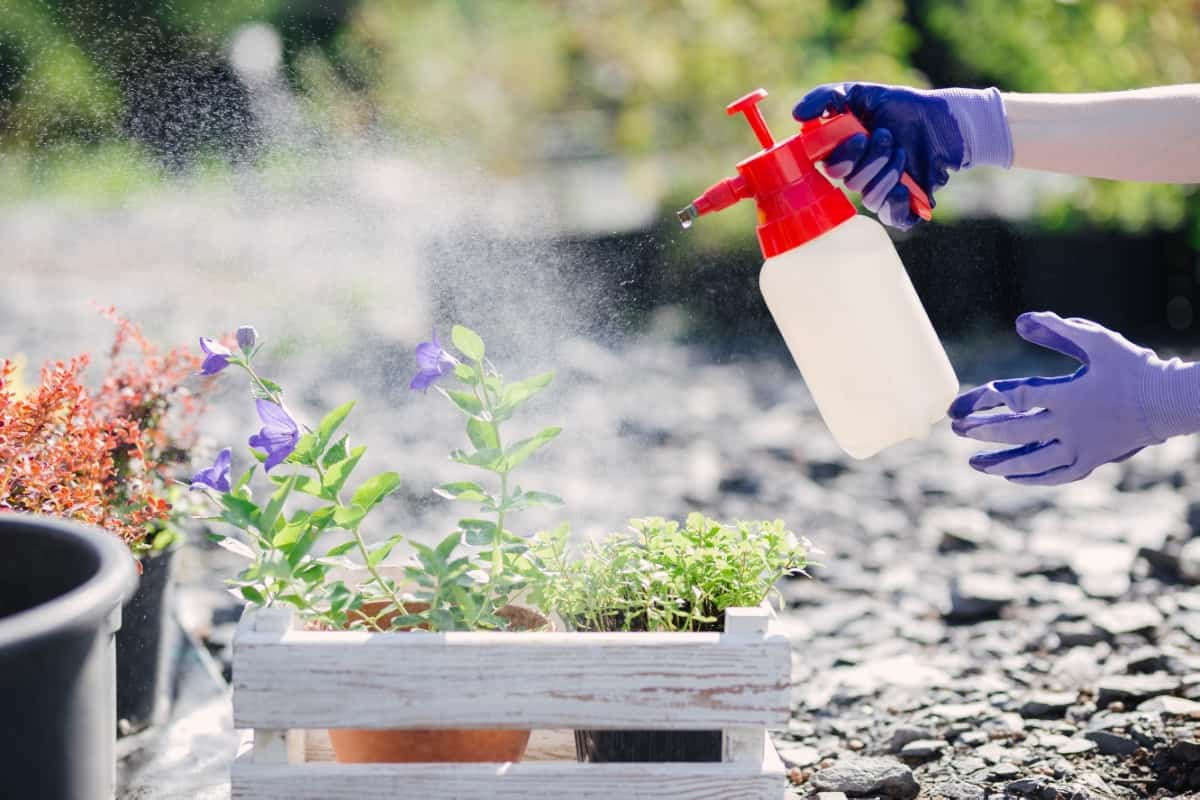Honeysuckle essential oil, derived from the vibrant orange flowers of the Honeysuckle plant (Lonicera periclymenum), is a powerful tool in natural pest control. With its sweet and floral aroma, this oil not only adds a touch of freshness to your surroundings but also acts as an effective bug-repellent.

Honeysuckle Oil for Pest Control
Benefits of Honeysuckle Oil as a Natural Bug Repellent
The main benefit of using Honeysuckle oil for pest control is its effectiveness in repelling a wide range of insects. Whether you’re dealing with mosquitoes, ants, flies, or even spiders, Honeysuckle oil can be an effective deterrent. Its strong fragrance acts as a natural repellent and can discourage pests from entering your space. In addition to its bug-repelling properties, Honeysuckle oil also has antibacterial and antiviral qualities.
Another advantage of using Honeysuckle oil for pest control is that it is safe for children and pets. Furthermore, using Honeysuckle oil can contribute to creating a more friendly approach to pest control. In addition to its bug-repelling properties, Honeysuckle oil has been found to possess antifungal properties. This means it can help eliminate harmful bacteria and fungi that may be lurking around your home or garden.
Different Types of Pests that Honeysuckle Oil Can Repel
One common pest that Honeysuckle oil can repel is mosquitoes. By using Honeysuckle oil as a natural bug repellent, you can keep these blood-sucking pests at bay and enjoy your time outdoors without constantly swatting them away. Another type of pest that can be deterred by Honeysuckle oil is ants. Honeysuckle oil acts as a barrier against these tiny invaders, preventing them from entering your living space. Ticks are another nuisance that can be repelled by Honeysuckle oil.
These small arachnids are notorious for transmitting diseases, making tick prevention crucial for outdoor activities like hiking or camping. Applying some homemade Honeysuckle oil bug repellent before heading out will help keep ticks at bay. In addition to mosquitoes, ants, and ticks, other pests that may be repelled by Honeysuckle oil include flies and gnats. These flying insects often make an appearance during warmer months and can quickly become a nuisance both indoors and outdoors.
Safety Precautions when Using Honeysuckle Oil for Pest Control
Always dilute the Honeysuckle oil before use. Mix a few drops of Honeysuckle oil with almond oil before applying it to plants. Keep in mind that some individuals may be more sensitive than others. If you have known allergies or sensitivities to plants or essential oils, exercise caution when using Honeysuckle oil. Avoid direct contact with eyes.
If accidental contact occurs, rinse with clean water and seek medical attention if necessary. Furthermore, keep Honeysuckle oil out of reach of children and pets. While natural products are generally considered safer than chemical pesticides, they should still be handled responsibly.
Ways to Use Honeysuckle Oil Bug Repellent
One method is by diluting the essential oil with a coconut or almond oil, and applying it directly. This creates a protective barrier that wards off bugs. Another way to use Honeysuckle oil bug repellent is by adding a few drops to a spray bottle filled with water. Shake well and then spritz this mixture around your home or outdoor areas where pests tend to gather. Not only will it repel bugs, but it will also leave behind a pleasant floral scent.
For those who prefer not to apply the oil directly, you can place a few drops of Honeysuckle essential oil on cotton balls and strategically place them in areas where bugs are likely to enter your home. This includes windowsills, doorways, and any cracks or crevices where insects may crawl through.
In case you missed it: How to Use Eucalyptus Oil for Pest Control: DIY Homemade Recipe for Natural Bug Repellent

If you’re planning an outdoor gathering, consider using Honeysuckle oil bug repellent in diffusers or candles. These can be placed strategically around your space for maximum bug-repelling benefits. Remember that while Honeysuckle essential oil is generally safe for adults, pregnant women should consult their healthcare provider before using it as a pest control measure.
Step-By-Step Guide on How to Make Honeysuckle Oil Bug Repellent at Home
- To make your own Honeysuckle oil bug repellent at home, you’ll need a few key ingredients. Start by collecting fresh Honeysuckle flowers. These can be found growing on the Honeysuckle plant in your garden or even along hiking trails. You’ll also need a carrier oil such as almond oil or jojoba oil to blend with the Honeysuckle flowers.
- Once you have gathered your Honeysuckle flowers, gently wash them to remove any debris. Next, pat them dry by using a clean towel and remove the petals from the stems. Discard any damaged petals or leaves.
- Pour the chosen carrier oil into a glass jar and add in the cleaned Honeysuckle petals. Ensure that all of the petals are submerged in the oil so they can properly infuse their fragrance and properties into it. Seal tightly and shake well.
- Place your jar in a cool, dark place, such as a cupboard or pantry, for about two weeks. During this time, give it an occasional shake to help enhance infusion.
- After two weeks, strain out the solid materials using cheesecloth or a fine mesh strainer into another clean jar or bottle. Make sure to squeeze out every last drop of infused oil from the material before discarding it.
Using Honeysuckle Oil for Indoor Pest Control
One of the best ways to utilize Honeysuckle oil for indoor pest control is by making your DIY spray. Mix a few drops of Honeysuckle oil with water and transfer the mixture into a bottle. Shake well and then spritz around doorways, windowsills, and other entry points where pests may try to infiltrate your home.
Another effective method is using Honeysuckle oil in diffusers or vaporizers. These devices release the scent of the essential oil into the air, creating an inhospitable environment for pests like ants, spiders, and flies. Remember always to use caution when applying any essential oils indoors.
Using Honeysuckle Oil for Outdoor Pest Control
This natural bug repellent not only keeps pests away but also adds a pleasant floral aroma to your surroundings. The best way to use Honeysuckle oil for outdoor pest control is by creating a DIY spray. Mix a few drops of Honeysuckle essential oil with water in a bottle and shake well before use. Spray this solution around your patio, garden, or any other area where you want to keep bugs away.
In case you missed it: How to Use Castor Oil for Pest Control: DIY Homemade Recipe of Castor Oil for Natural Bug Repellent

Additionally, planting natural Honeysuckle plants in your garden can act as a deterrent for certain insects. The scent emitted by these plants naturally repels many bugs, making them an attractive addition to any outdoor space.
How to Mix Honeysuckle Oil for Pest Control
To create your homemade bug repellent, you’ll need just a few ingredients: Honeysuckle essential oil, carrier oil, and an empty spray bottle. Start by choosing a carrier oil that will dilute the potent Honeysuckle essential oil. Popular options include almond oil or jojoba oil. Pour about 1/4 cup of carrier oil into the spray bottle. Next, add around 10-15 drops of Honeysuckle essential oil to the carrier oil in the spray bottle.
This concentration should provide enough strength to repel bugs without overwhelming your senses. Once both oils are combined in the spray bottle, please give it a good shake to mix them thoroughly. The fragrance of the Honeysuckle will infuse with the carrier oil, creating a natural bug-repellent solution that smells delightful too. Reapply every few days or after rain showers for maximum effectiveness.
Additional Tips for Effective Pest Control with Honeysuckle Oil
When using Honeysuckle oil as a pest control method, it’s important to dilute it properly. To effectively repel pests, it’s important to apply the Honeysuckle oil bug repellent in areas where pests are likely to be present. Honeysuckle oil may need to be reapplied periodically depending on the severity of your pest problem and the duration of its effectiveness.
For enhanced effectiveness, consider combining Honeysuckle oil with other natural pest control ways such as diatomaceous earth or vinegar solutions. These combinations can create a powerful barrier against common household pests. Proper storage is important for maintaining the potency of Honeysuckle essential oil over time. Please keep it in a cool, dark place, away from direct sunlight, heat sources, and moisture.
In case you missed it: How to Use Chrysanthemum Oil for Pest Control: DIY Homemade Recipe of Chrysanthemum Oil for Natural Bug Repellent

Conclusion
Honeysuckle oil is not only a fragrant addition to your garden, but it also has numerous benefits when it comes to pest control. Using Honeysuckle oil can help you naturally repel pests without the requirement for harsh chemicals or pesticides. It can effectively ward off mosquitoes, flies, ants, gnats, moths, spiders, and even some garden pests like aphids and caterpillars.
- Beneficial Insects in Pest Management
- Natural Solutions for Pest Control in Flower Gardens
- Types of Fungicides Used in Agriculture
- Common Issues in the Fruit Development Stage of Pomegranate Farming
- Fruit Development Issues in Papaya: Easy Solutions and Treatment
- Soil-Borne Diseases and How to Protect Your Plants
- Practices to Prevent Disease Spread in the Garden
- From Wilted to Thriving: How to Treat Root Rot Naturally in Houseplants
- Natural Remedies to Cure Brown Spots on Fig Tree Leaves